The following testimony was submitted to the Senate Subcommittee on Europe and Regional Security Cooperation on January 31, 2024, for the “The North Atlantic Treaty Organization at 75: Reflecting on Past Successes and Planning for the Future” hearing.
Chairwoman Shaheen, Ranking Member Ricketts, members of the subcommittee, thank you for the opportunity to testify today. I am Tara Varma, a visiting fellow with the Center on the United States and Europe at the Brookings Institution. My research focus includes current French security proposals in the European framework, as well as efforts to implement European sovereignty in traditional and non-traditional security fields.
I am honored to speak with you today about expectations ahead of this year’s NATO summit in Washington. My testimony this afternoon reflects my personal views and should not be attributed to the staff, officers, or trustees of the Brookings Institution.
I would like to focus my statement today on three points: first, the state of play, then how Europe is stepping up, and finally why reinforced EU-NATO cooperation matters.
The state of play
In July 2022, NATO adopted its latest Strategic Concept, almost five months after Russia’s full-scale invasion of Ukraine. This new Strategic Concept laid out NATO’s core tasks as deterrence and defense, crisis prevention and management, and cooperative security. It described a Euro-Atlantic security environment profoundly and durably changed by Russia’s invasion of Ukraine. The swift reactions of the alliance in the immediate aftermath of Russia’s attack also demonstrated its vitality and relevance.
The summit in Vilnius last year succeeded in showcasing strong trans-Atlantic unity and resolve. The alliance’s center of gravity is its unity, solidarity, and cohesion. Russia’s attack on Ukraine has reinforced our sense of political cohesion, as well as the credibility of the alliance’s deterrent. Russia has committed relentless attacks and massacres in Ukraine but has yet to attack a NATO member country. The 2022 Strategic Concept explained that Russia poses “the most significant and direct threat to Allies’ security and to peace and stability in the Euro-Atlantic area.”
If the summit in Vilnius last year succeeded in showcasing strong trans-Atlantic unity and resolve, especially in terms of political cohesion, the question of the future Ukraine-NATO relationship remains open and will be part of the Washington Summit discussions too. Key discussions should also revolve around sustained defense equipment procurement and production, going beyond the 2 percent of GDP threshold.
Europe is stepping up
The shock of the attack and the new reality it brought about means mitigating the effects of the previous reality in which European national defense spending had fallen by an average of 31 percent between 1995 and 2015, with disinvestment in key capabilities for collective defense and by Ukraine.
Europeans acknowledge these capability gaps, and they are looking at ways to mitigate them, in particular by taking the unprecedented step of agreeing to a common European missile and ammunition acquisition and production deal last year. For a political project whose essence was to maintain peace on the European continent, these decisions are historic. However, their implementation will take time. And time is precisely what Ukraine doesn’t have.
The question of Ukraine’s path to NATO membership overshadowed the Vilnius Summit. Last July, the NATO secretary general said member countries had agreed Ukraine would eventually join the alliance once the war is over. While the war continues, and absent a membership proposal, several European countries, the United Kingdom, Germany, and soon France, have committed to providing security guarantees to Kyiv. These should be clarified to ensure Ukraine and Europe’s security.
European heads of state are meeting tomorrow (February 1) at the European Council, where I hope they will agree to give Ukraine the long-term, predictable funding it needs.1 It is of vital interest to Ukraine, and hence it is now of vital interest to Europe too. Europeans should go a step further and make sure that Kyiv receives not only societal and economic support—which has been the bulk of European aid—it needs but also the much-needed military equipment to protect Ukraine’s critical infrastructure and population.
Since the beginning of the war, European countries have stepped up. France is spending 1.9 percent of its GDP on defense ($56.65 billion) and so are the U.K. (2.07 percent, $65.77 billion), Germany (1.57 percent of GDP, $68.08 billion), and Poland (nearly 4 percent of its GDP, $29.1 billion).
The European Peace Facility (EPF) is an off-budget instrument aimed at enhancing the European Union’s ability to prevent conflicts, build peace, and strengthen international security. It also enables the financing of operational actions that have military or defense implications under the Common Foreign and Security Policy (CFSP). Below is a breakdown of European aid to Ukraine until now:
- $43 billion in financial and budgetary support and humanitarian and emergency assistance.
- $29 billion in military assistance.
- $6 billion from the EPF.
- $18 billion from the EU budget to support Ukrainian refugees.
- $1 billion for maintaining food and aid transport lanes.
Europeans can do more when it comes to burden-sharing—and they have pledged to do so. That said, we still need U.S. leadership. The viability of NATO as an alliance depends on it. And so does the credibility of its deterrent—an urgent concern while Russian President Vladimir Putin attacks Ukraine daily and is hoping trans-Atlantic unity will falter.
One should not underestimate the Copernican revolution the EU went through in establishing the EPF. It has enabled collective EU and EU member state support to Ukraine. Part of that funding went to forms of aid that the EU is used to providing: almost $47 billion for financial and budgetary support and humanitarian and emergency assistance. This support is crucial as it allows Ukraine to maintain infrastructures and public services, such as hospitals, schools, and housing for relocated people. It also ensures macroeconomic stability and helps restore critical infrastructure destroyed by Russian attacks.
But the truly innovative aspect of the Peace Facility is that it allows funding to be dedicated, for the first time in the EU’s history, to military assistance. Europe as a whole has spent a total of $29 billion on ammunition for air defense systems, Leopard tanks, and fighter jets. This encompasses supplies provided directly on a bilateral basis by European member states as well as an unprecedented $6 billion from the EPF. On ammunition for Ukraine, EU support includes $2.2 billion for the joint procurement and delivery of up to an additional 1 million rounds of artillery ammunition by early 2024, and an additional $535 million to urgently boost EU defense industry capacities in ammunition production. The difficulty now lies in the defense industries on both sides of the Atlantic materializing the production of sorely needed equipment. We have seen European companies struggling to ramp up production, as they now move from the smaller production capacities they adapted to at the end of the Cold War to a vastly different strategic environment in Europe since Russia’s invasion of Ukraine. This new phase of adaptation will take time: once the funding is secured, factories need to be built and workers trained. New supply chains of critical materials must also be set up.
Increased EU-NATO cooperation
Hence, there is a need for NATO, the EU, and member states to demonstrate their willingness, in words and action, to support Ukraine in the long run.
While NATO has a procurement agency and has been the essential go-to forum for coordination, the EU is endowed with financial instruments and the industrial toolbox that can incentivize defense industries in Europe. Indeed, Ukraine’s allies find themselves buying equipment off the shelf as they go. But if they are serious about providing long-term, decisive support to Kyiv, Europeans will have to develop these long-term capabilities for themselves.
The security of the EU and NATO are inter-connected. With Sweden about to become a NATO member, 23 European Union member states will also be NATO members. The addition of Sweden to the alliance will also lead to a strengthened Baltic Sea corridor. In December, the EU officially opened accession negotiations with Ukraine, effectively tying Kyiv and the union’s futures together.
The trans-Atlantic alliance is rendered stronger by the partnership between the EU and NATO, and EU defense initiatives contribute to trans-Atlantic burden-sharing. NATO is the foundation of collective defense, and a bolstered European defense is complementary to it. Making both organizations stronger is mutually reinforcing and must be done in tandem.
In that context, the idea of a European “pillar” within NATO—meaning that a politically and economically strong Europe should contribute similar military capacity as the United States to mutual security—will be both a European and an American strategic interest.
EU-NATO cooperation is also an area where we tackle global issues, particularly when it comes to China.
The months and weeks leading up to the NATO Washington summit should be an opportunity for increased trans-Atlantic cooperation and for bolstering our defense plans, as we seek to protect Ukraine and provide it with all the equipment and assistance it needs. A strong and stable Europe is in the United States’ interest.
The Brookings Institution is committed to quality, independence, and impact.
We are supported by a diverse array of funders. In line with our values and policies, each Brookings publication represents the sole views of its author(s).
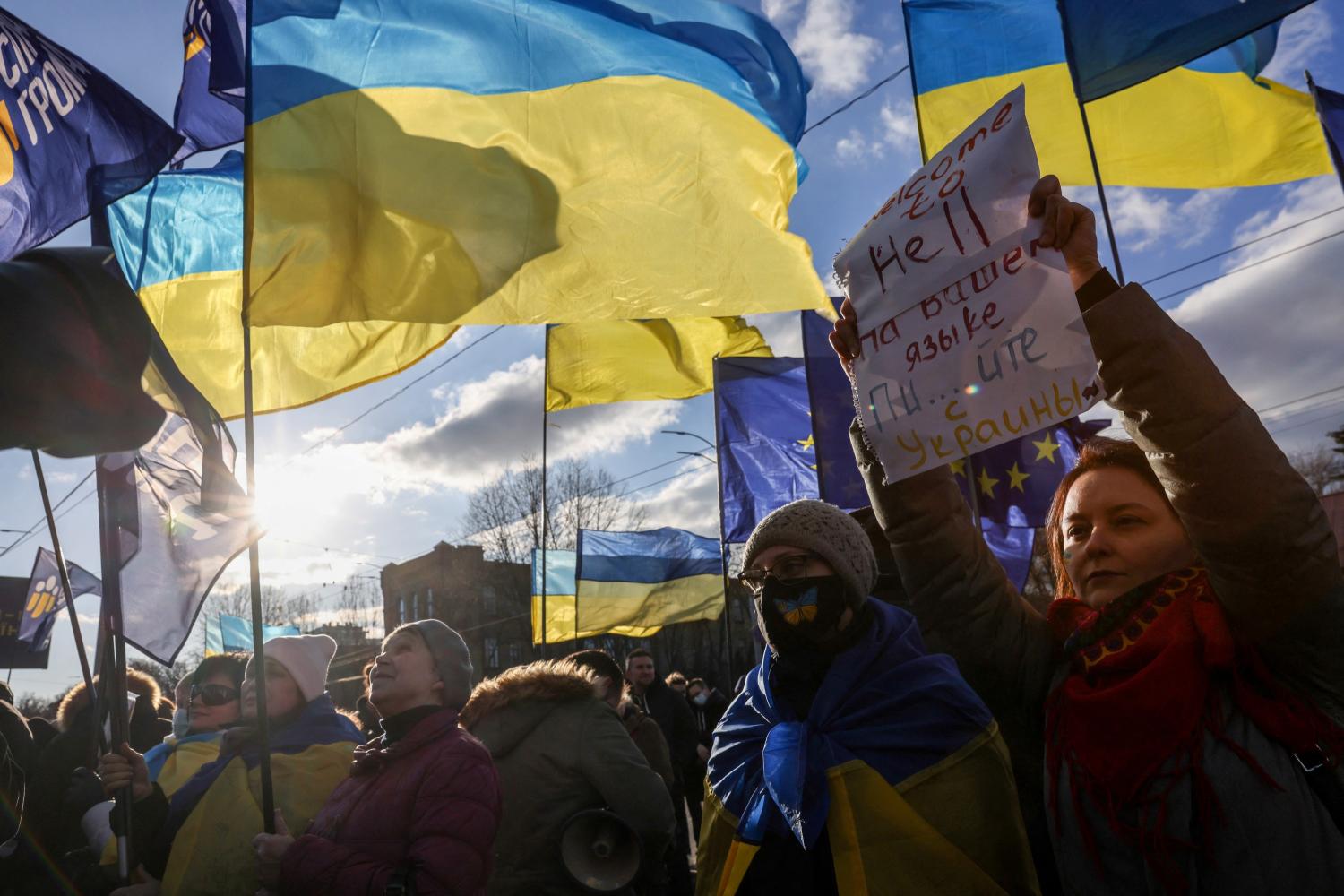


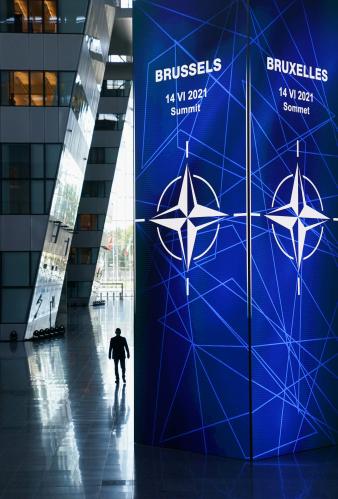
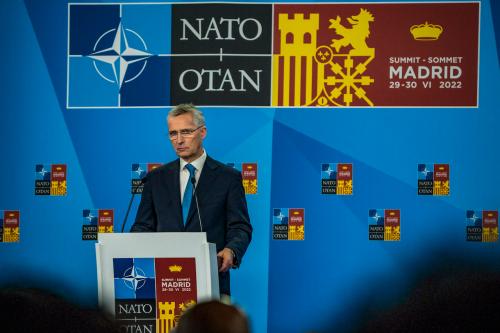

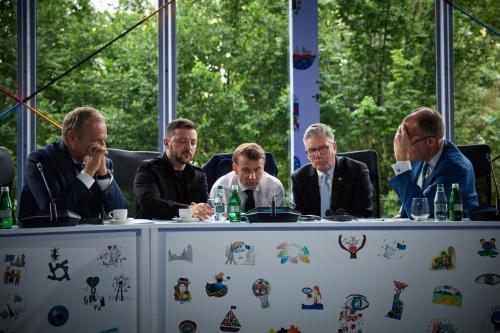
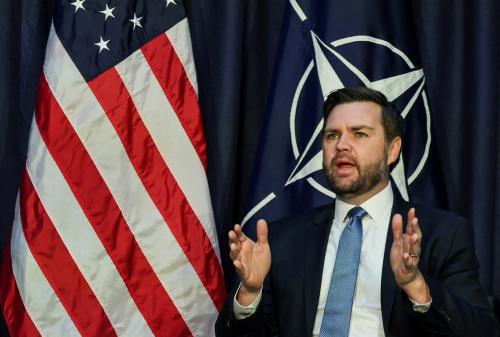
Commentary
TestimonyEurope and NATO are stepping up on Ukraine
February 2, 2024